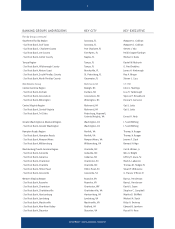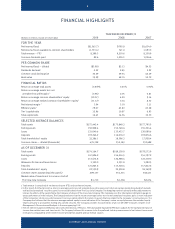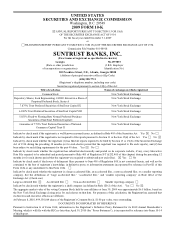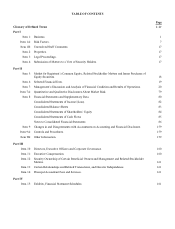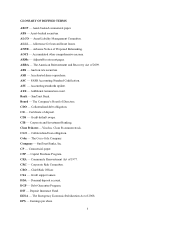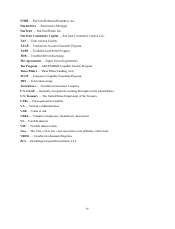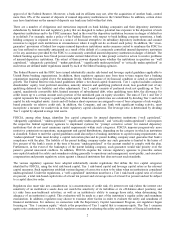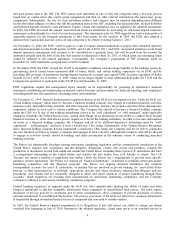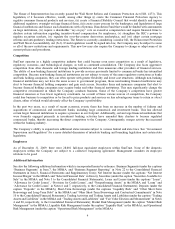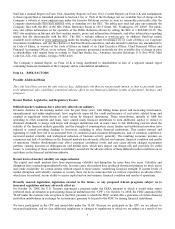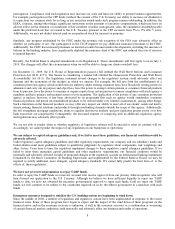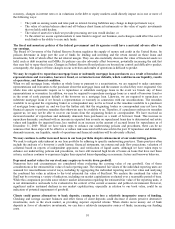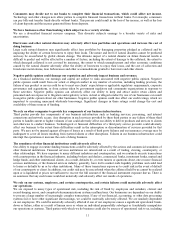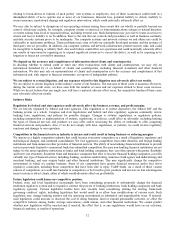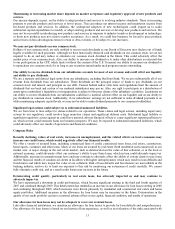SunTrust 2009 Annual Report Download - page 19
Download and view the complete annual report
Please find page 19 of the 2009 SunTrust annual report below. You can navigate through the pages in the report by either clicking on the pages listed below, or by using the keyword search tool below to find specific information within the annual report.In December 2009, the Basel Committee issued two consultative documents proposing reforms to bank capital and liquidity
regulation. The Basel Committee’s capital proposals would significantly revise the definitions of Tier 1 capital and Tier 2
capital. Among other things, they would: reemphasize that common equity is the “predominant” component of Tier 1 capital
by adding a minimum common equity to risk-weighted assets ratio, with the ratio itself to be determined based on the
outcome of an impact study that the Basel Committee is conducting, and requiring that goodwill, general intangibles and
certain other items that currently must be deducted from Tier 1 capital instead be deducted from common equity as a
component of Tier 1 capital; disallow full value of MSRs from common equity; disqualify innovative capital instruments –
including U.S.-style trust preferred securities and other instruments that effectively pay cumulative dividends – from Tier 1
capital status; strengthen the risk coverage of the capital framework, particularly with respect to counterparty credit risk
exposures arising from derivatives, repurchase agreements and securities financing activities; introduce a leverage ratio
requirement as an international standard, including all commitments (including liquidity facilities), unconditionally
cancellable commitments, direct credit substitutes, and other items fully funded; and implement measures to promote the
build-up of capital buffers in good times that can be drawn upon during periods of stress, introducing a countercyclical
component designed to address the concern that existing capital requirements are procyclical – that is, they encourage
reducing capital buffers in good times, when capital could more easily be raised, and increasing capital buffers in times of
distress, when access to capital markets may be limited or they may effectively be closed. The capital proposals do not
specify a percentage for the new ratio of common equity to risk-weighted assets or changes in the current minimum Tier 1
(4%) and total (8%) risk-based capital requirements. Instead, they state that the minimum percentage requirements for the
new ratio of common equity to risk-weighted assets and the other capital ratios – including Tier 1 capital to risk-weighted
assets, total capital to risk-weighted assets and the new leverage ratio – will be included in a “fully calibrated, comprehensive
set” of capital and liquidity proposals to be released by December 31, 2010. Independently in September 2009, the U.S.
Treasury issued a policy statement titled “Principles for Reforming the U.S. and International Regulatory Capital Framework
for Banking Firms” setting forth core principles intended to address many of the same substantive items as the Basel
Committee capital proposals.
The Basel Committee’s liquidity proposals, although similar in many respects to tests historically applied by banking
organizations and regulators for management and supervisory purposes, if implemented would for the first time be formulaic
and required by regulation. They would impose two measures of liquidity risk exposure, one based on a 30-day time horizon
and the other addressing longer term structural liquidity mismatches over a one-year time period. The 30-day time horizon
measure would not include certain assets (specifically, Fannie Mae and Freddie Mac securities) that play a major role in
current liquidity management, which could have substantial impact.
The Basel Committee indicated that it expects final provisions responsive to the proposals to be implemented by
December 31, 2012. Ultimate implementation in individual countries, including the United States, is subject to the discretion
of the bank regulators in those countries. The Basel Committee’s final proposals may differ from the proposals released in
December 2010, and the regulations and guidelines adopted by regulatory authorities having jurisdiction over the Company
may differ from the final accord of the Basel Committee. Moreover, although some aspects of the Basel Committee
proposals were quite specific (for example, the definition of the components of capital), others were merely conceptual (for
example, the description of the leverage test) and others not specifically addressed (for example, the minimum percentages
for required capital ratios). We are not able to predict at this time the content of guidelines or regulations that will ultimately
be adopted by regulatory agencies having authority over the Company or the impact of changes in capital and liquidity
regulation upon us. However, a requirement that the Company and its bank subsidiaries maintain more capital, with common
equity as a more predominant component, or manage the configuration of their assets and liabilities in order to comply with
formulaic liquidity requirements, could significantly impact our financial condition, operations, capital position and ability to
pursue business opportunities.
There are various legal and regulatory limits on the extent to which the Company’s subsidiary bank may pay dividends or
otherwise supply funds to the Company. In addition, federal and state bank regulatory agencies also have the authority to
prevent a bank or bank holding company from paying a dividend or engaging in any other activity that, in the opinion of the
agency, would constitute an unsafe or unsound practice. The FDA provides that, in the event of the “liquidation or other
resolution” of an insured depository institution, the claims of depositors of the institution (including the claims of the FDIC
as subrogee of insured depositors) and certain claims for administrative expenses of the FDIC as a receiver will have priority
over other general unsecured claims against the institution. If an insured depository institution fails, insured and uninsured
depositors, along with the FDIC, will have priority in payment ahead of unsecured, nondeposit creditors, including the parent
bank holding company, with respect to any extensions of credit they have made to such insured depository institution.
The FDIC maintains the DIF by assessing depository institutions an insurance premium. The amount each institution is
assessed is based upon statutory factors that include the balance of insured deposits as well as the degree of risk the
institution poses to the insurance fund. The FDIC recently increased the amount of deposits it insures from $100,000 to
$250,000. This increase is temporary and will continue through December 31, 2013. The Company’s banking subsidiary pays
an insurance premium into the DIF based on the quarterly average daily deposit liabilities net of certain exclusions held at the
Company’s banking subsidiary. The FDIC uses a risk-based premium system that assesses higher rates on those institutions
3


